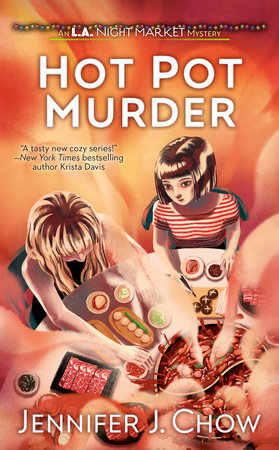To be, or not to be; ay, there's the point.
To die, to sleep—is that all? Ay, all.
No, to sleep, to dream—ay, marry, there it goes,
For in that dream of death, when we awake,
And borne before an everlasting judge,
From whence no passenger ever returned,
The undiscovered country, at whose sight
The happy smile and the accursed damned,
But for this, the joyful hope of this,
Who'd bear the scorns and flattery of the world,
Scorned by the right rich, the rich cursed of the poor,
The widow being oppressed, the orphan wronged,
The taste of hunger, or a tyrant's reign,
And thousand more calamities besides,
To grunt and sweat under this weary life,
When that he may his full quietus make,
With a bare bodkin? Who would this endure,
But for a hope of something after death,
Which puzzles the brain and doth confound the sense,
Which makes us rather bear those evils we have
Than fly to others that we know not of?
Ay, that. O this conscience makes cowards of us all.
– Hamlet, Act III, Scene i
Thanks for reading this far. If you have even the most passing acquaintance with the most famous speech in the English language (or, if we're being honest, in any language, including made-up ones like Klingon!), you've probably already noted that the above just feels...off.
And you are not wrong.
The above is quoted from the First Quarto, an early version of the text of Shakespeare's play about the famous "melancholy Dane." As such it understandably reads more like a rough draft of the more polished, harder-hitting version from the First Folio, a later, more complete collection of Shakespeare's plays–and thus most familiar to modern audiences.
Current and prevailing scholarship holds that Shakespeare himself never made the least effort to preserve the text of any of his plays. Both the First Quarto and the First Folio (to say nothing of several other editions of both) were compiled and published by people other than Shakespeare: the Quarto during Shakespeare's lifetime (1603) and the Folio seven years after his passing (1623)
As nearly as we can tell, the plays in both of these editions were compiled from the scripts of the actors who trod the footboards of places like The Globe and Blackfriars when Shakespeare's company first produced them.
And for all that, each version is that much different. For comparison's sake, here is the more familiar version of Hamlet's famous fourth soliloquy:
Or to take arms against a sea of troubles,
And, by opposing, end them? To die, to sleep—
No more, and by a sleep to say we end
The heartache and the thousand natural shocks
That flesh is heir to—'tis a consummation
Devoutly to be wished. To die, to sleep.
To sleep, perchance to dream. Ay, there's the rub,
For in that sleep of death what dreams may come
When we have shuffled off this mortal coil
Must give us pause. There's the respect
That makes calamity of so long life,
For who would bear the whips and scorns of time,
The oppressor's wrong, the proud man's contumely,
The pangs of disprized love, the law's delay,
The insolence of office, and the spurns
That patient merit of the unworthy takes,
When he himself might his quietus make
With a bare bodkin? Who would fardels bear,
To grunt and sweat under a weary life,
But that the dread of something after death,
The undiscovered country from whose bourn
No traveler returns, puzzles the will
And makes us rather bear those ills we have
Than fly to others that we know not of?
Thus conscience does make cowards of us all,
And thus the native hue of resolution
Is sicklied o'er with the pale cast of thought,
And enterprises of great pith and moment
With this regard their currents turn awry,
And lose the name of action.
See? It just feels right. Especially if you're a Shakespeare fan. The cognitive dissonance a Shakespeare fan likely feels when first experiencing an alternate draft of the Bard's work can be likened to listening to a live performance of a song one is well familiar with, and hearing someone blow a passage, a drummer lose time, the singer off-key. You know what sounds right to you.
If you've ever felt that way (and we all have!), then you know what it's like to be jarred right out of a book by something that just...doesn't...fit. Maybe you're scoffing at how a character reacts in a given situation "Ha! The narrator catches his wife cheating with the garbage man and he introduces himself, shakes the guy's hand offers to swap his expensive foreign for the garbage man's Bondo-encrusted 1983 Honda Prelude?!?!"). It's possible this is a twist introduced by the author, meant to disconcert and intrigue the reader (Gotta keep those pages a-turnin', after all!), or perhaps it's comic? Being played for laughs?
If that's the case, well and good. But if it's just a result of the author screwing up, well, like I said: jarring.
And as an author, the last thing we want is for the reader to be pulled out of our story. Right? Right!
And with all the things it's possible for an author to get wrong, it can get worse: the author might write historical fiction.
Yep.
Historical fiction.
Which is what I write.
Well, historical crime fiction.
Why write a subcategory of fiction that requires not just the usual array of cheap parlor tricks, um, I mean, professional writing, well-drawn characters, memorable dialogue, vivid settings and a satisfying ending, but also a metric ton of research, all of it guaranteed to suck the author down rabbit hole after time-wasting rabbit hole?
Because it's fun.
Duh.
Challenging? Yes.
Maddening? For sure.
But, you know. Fun.
Unless you get something wrong. And someone lets you know it. Nowadays. In the Age of the Internet.
That can be....well. Not so fun.
I got to thinking about this sort of thing and how to best avoid the larger pitfalls particular to the writing of historical fiction just last week while reading a novel by an author I like and respect, with a long track record in successful fiction sales. This new novel is, to my knowledge, this particular author's first foray into writing historical fiction.
And no, I'm not going to reveal this author's name. Mind your own business Er, uh, That would be unprofessional.
First things first: this author did so many things right in this book. They did their homework, the amount of background/historical research they did permeates the book, and the writing is solid.
That said, I got jerked out of the narrative within the first fifty pages. Why? Something so simple.
This novel is set several decades in the past, and yet at one point, the first-person narrator talks about a visceral rush of excitement they experienced thusly: "My adrenalin spiked."
There is simply no way anyone in the era in which this novel is set would describe that sensory experience in that way. No. Way.
Now, granted, I'm a history nerd. Got my MA in it, I teach it, and I've a bunch of nonfiction books on historical subjects (mostly political corruption). So it's entirely possible most readers wouldn't catch the above mistake.
But if we're being honest, it only takes one.
Am I going to reach out to the author in question and say anything about the above historical malapropism? Of course not. Again, this author got so much right, including several wonderfully accurate runs of dialogue.
Plus, I have a life.
But there are folks out there who are passionate about the minutiae. Especially in this age of hyper-specialization, where the details are ready available for confirmation at the end of your internet connection.
So how to avoid a flub like the above mistake?
Simple: immerse yourself in the conversational tone of the time about which you're writing. Read diaries, watching documentaries produced during the era in question (if they had film technology during that time). Check out the published correspondence of local people who correspond (see what I did there?) with the general make-up of your characters.
In any number of ways it's a lot like learning another language. When you can think in it, you've mastered it. I have two current works in progress: one a short story set in 1890 Seattle. The other, a novel set in 1844 Washington, D.C. The research that has gone into both of these projects is considerable, but I am confident in my ability to "talk" like any number of my characters. It takes hard work, a fair amount of research, and a ton of imagination, but hey, we're writers. Isn't all of this sort of our jam?
Try it. It works.
And that's it for me this go-round. Tune in next time to see how to successfully navigate the potential pitfalls of nailing the sorts of specialized historical analysis/fiction writing that concern members of the following thriving hobbyist subcultures sure to know if you've erred in describing those things near and dear to their hearts:
 |
| You haven't lived until you've had a member of this club show up at one of your readings. |
 |
| Wouldn't we all? |
 |
| You gotta admire the passion. |
 |
| I know which one I'm voting for! |

























.jpg)
